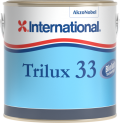What's the best way to paint outdrives?
You can create a superb finish on outdrives, but to ensure the best adhesion you need to pay close attention to initial surface preparation. It’s also worth noting that the longevity of these systems probably won’t be the same as the rest of the boat, due to the usage and RPMs they have to endure.
Before you start
The key to protecting underwater metals from corrosion is correct preparation of the substrate and choosing the best priming solution for your project. But before you start the preparation, you need to establish the exact type of metal you are working with.
- Outdrives and stern drives are often constructed from aluminium.
Propellers are manufactured from bronze, stainless steel or aluminium.
Keels are usually cast iron or steel with internal lead or exposed lead incorporated into the lower end shape or added as a bulb at the bottom.
Drive shafts, trim tabs, struts and other fittings may be manufactured out of stainless steel, bronze, or steel.
Application advice
- With the exception of bronze propellers, apply either a single or two pack epoxy primer as best suits your requirements.
Due to the severe turbulence and adhesion problems relating to bronze material we do not recommend the use of any specific primer at this time
Hard types of antifouling are the best for propellers due to the harsh conditions and high levels of turbulence they encounter.
Other surfaces can use either hard or eroding/ablative antifoulings.
Aluminium must be coated with an antifouling specially formulated for such surfaces.
Other surfaces can generally use any type of antifouling, copper based or copper free.
It is essential that the preparation of the bronze surface is thorough. The bronze should be meticulously cleaned and abraded to bright metal before priming and applying the antifouling. Take great care when abrading any propeller type, as excessive abrading can alter the profile and cause it to go out of balance.
Health and safety
- Ensure that you read all label instructions and safety details from the safety data sheet prior to starting your project.
- Wear safety glasses at all times to protect your eyes from splashes.
- Chemicals can cause skin irritation. Wear overalls and protective rubber gloves to protect your skin and clothing.
- Before commencing preparatory work, ensure the area you are working in is adequately ventilated.
- Many products contain either solvents or other chemicals that can build up in confined areas creating a hazard and/or an unpleasant working environment. If it is not possible to avoid these conditions wear suitable respiratory protection.
- Ensure all products are kept out of the reach of children both whilst using and when stored away.
- Ensure your operation will not affect others nearby.
Waste
Ensure any waste product including cans, rags, brushes, roller sleeves masking tape and paper, gloves and overalls are disposed according to local regulations. Do not allow any waste material such as unused paint to enter any waterways.
Paint your boat like a pro
Find the best products to keep your boat in great condition
Get all the support you need to paint with confidence
Benefit from our continuous innovation and scientific expertise








